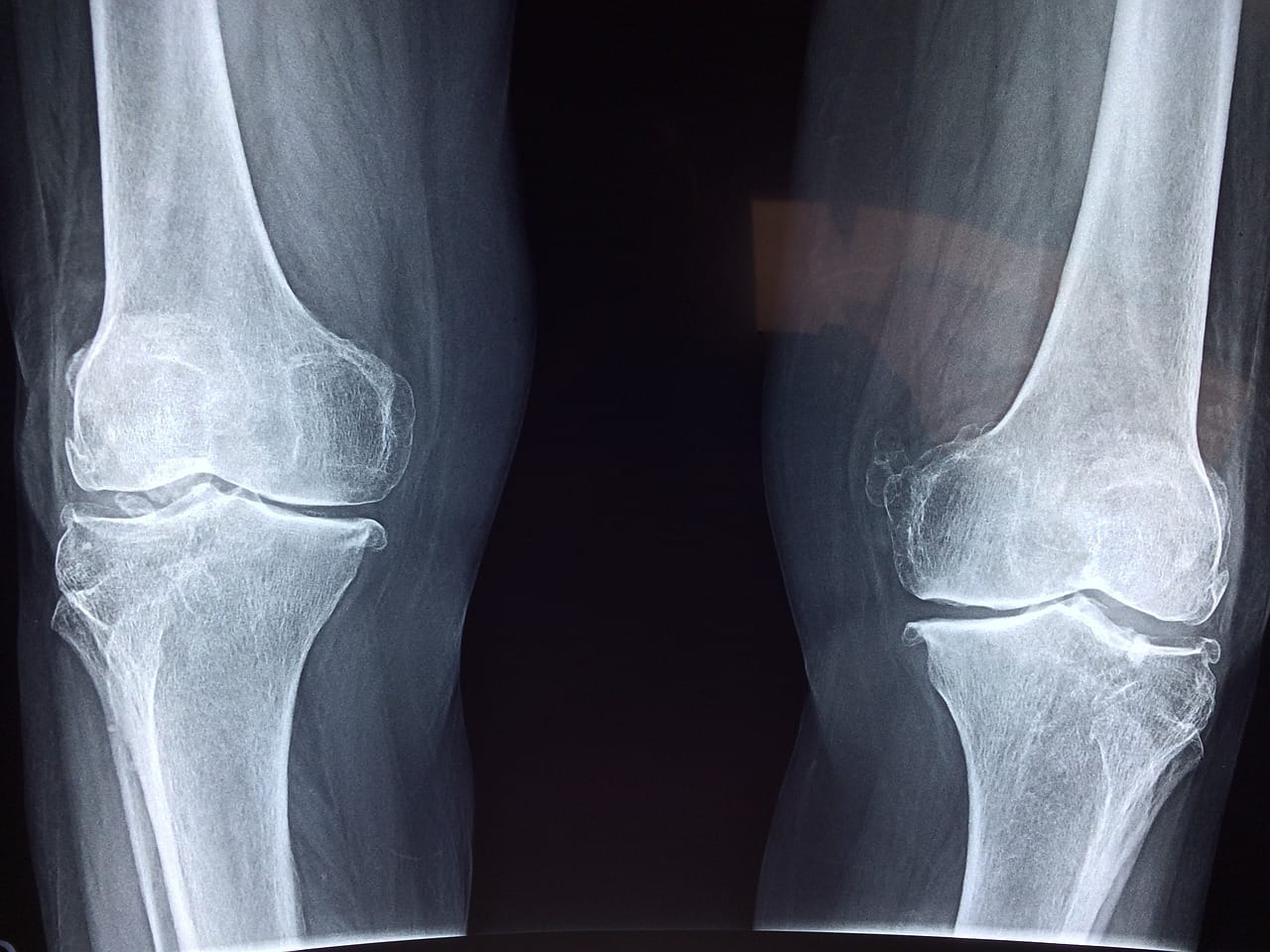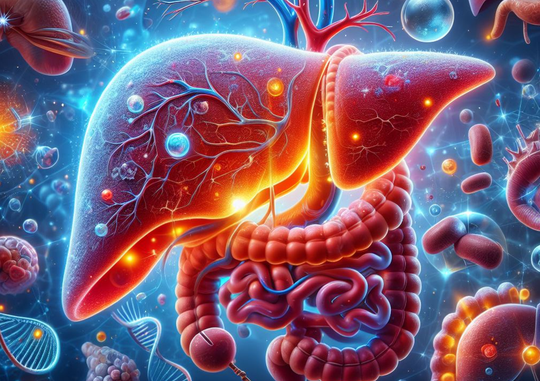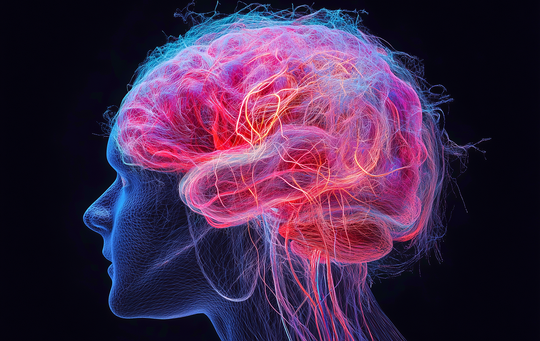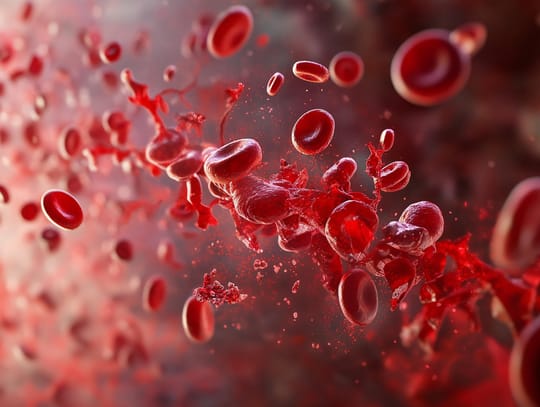In this blog post I'll consider red light therapy for knee health, pain, and function. These domains are all interrelated and I'll explore the science on that topic in great detail.
In the past I've written a blog on red light therapy for arthritis. This article is more specific because it focuses on the knee specifically, but doesn't restrict itself to arthritis only. On the contrary, I'll look into knee health in general - also for healthy people.
So let's start with the basics:
Knee Pain And Health Introduction
Knee health is a complex phenomenon (1; 2; 3; 4; 5; 6; 7; 8; 9). And most people don't really consider knee health until there's an issue, such as an injury or joint problems.
The most important knee movements are walking, running, stairclimbing, and squatting (1). Once there's a knee pathology, different things happen usually, such as the ability to no longer flex the knee fully, lower walking speed, and decreased muscle strength (10).
And, it's not just osteoarthritis or rheumatoid arthritis affecting knee health - the two main types of arthritis (10). Sports can also affect knee health, as well as neurological disorders such as the after effects from a stroke. With sports, it's often just the cartilage (meniscus) in the knee that's affected or the ligaments around the knee.
Knee osteoarthritis affects a ton of people though - around 650 million in 2023 (2). Mostly people over 45 years old are diagnosed with knee osteoarthritis. However, meniscus problems also affect 12% of the population (2). These people are far from powerless, however, as lifestyle interventions such as fat loss (if overweight) and movement are proven to counter knee problems (2).
Surgery for knee osteoarthritis is also a frequently used intervention but should only be used at the end stage of knee arthritis (2). I'll get back to red light therapy for knee surgery later in this blog post. And, for extreme trauma events, knee surgery is often necessary.
Knee pain also changes the neuromuscular coordination - so in relation to biomechanics (3). In plain English, that means that pain changes how the nervous system interacts with the muscles, with pain as a mediator. You can easily imagine that you'll start moving differently if you're in pain. The problem here, however, is that in the long run, that altered movement may damage the joint itself (3).
Sedentary behavior is horrible for both the risk of developing knee pain and having it deteriorate though (4). Resistance training improves pain and physical function in people with osteoarthritis (5). And, activity does improve quality of life in people with knee pain (6). Health coaching can help promote activity here (7).
Even running, against the perception of some, is protective against knee problems (11). In the long run, walking, running, and other activities that load the knee are protective for the joint (12). Even in old age, moreover, squatting regularly can improve your movement pattern (13).
When looking at this research, I was a bit shocked how much of the knee research focuses at pathologies, and how little on improving knee function in healthy individuals. But that's a topic for another day and a general pattern in health care.
Next up, let's consider how red light therapy for knee health and pain works:
How Red Light Therapy Works
Red light therapy penetrates into your body and has a biological effect there. Red light therapy consists of red and near-infrared light. That light has biological effects such as upgrading energy-production, lowering inflammation and oxidative stress, increasing blood flow, and more (14; 15; 16).
If you want more information on this topic, consider the blogs on how often should you use red light therapy and how to use red light therapy for beginners. I'll explore this topic in relation to the knee in the next section:
Does Red Light Therapy Work For Knee Pain?
In this section, I'll explore the question "does red light therapy work for knee pain". I'll cover different types of knee pain:
Red Light Therapy For Arthritic Knee
Here's what a very recent 2023 review (which analyze and integrate earlier evidence) states about the current evidence on red light therapy for arthritic knees:
"[Red light therapy]'s anti-inflammatory properties and beneficial effects in arthritis treatment have been reported in numerous studies, including animal experiments and clinical trials. [Red light therapy]'s effectiveness in arthritis treatment has been extensively researched in arthritis-specific cells. Despite the positive results of [red light therapy] treatment, questions about specific parameters such as wavelength, dose, power density, irradiation time, and treatment site remain" (17).
Here many different wavelengths in the 600 - 1,000nm range seem to work, with varying power outputs as well (18). The power outputs of succesful studies range between 20 mW/cm2 and 500 mW/cm2 - check this video on dosing if you don't know what I mean with those things!
Red Light Therapy For Knee Osteoarthritis
Osteoarthritis is one of the most common reasons for knee pain. Here too, we've got some reviews from 2023 on this topic (19; 20). Here, researchers recommend red light therapy:
"because it is drug-free, non-invasive, safe and useful with rarely reported side effects. [...] This stimulation, in turn, fosters cell proliferation and tissue regeneration" (19).
Here, most studies have wavelengths in the near-infrared range (21). The total dose for most studies is 3-90 J/cm2 - although exceptions exist (21). The researchers note the following about the dosing parameters as well, though:
"For instance, the optimal light irradiation parameters (including wavelength, spot area, power density, energy density, frequency of application etc.) for treating [knee osteoarthritis] should be uncovered. To date, the most commonly used light source for [red light therapy] is laser. However, LED also exerts similar therapeutic effects. Besides, LED may deliver much more energy because it has a broad irradiation area. And LED can be made into wearable devices for its property of flexibility, which might help chronic [knee osteoarthritis] patients to treat themselves at home. Besides, the underlying mechanisms of [red light therapy] still need to be explored" (21).
Inflammation of the joint cavity is impeded. And, red light therapy is protective of the cartilage here.
Some studies show very positive effects here, and some studies show no effect. A 2019 review, for instance, states that red light therapy can reduce the 0-100 Visual Analogue Scale (VAS scale) by 30 points (22).
There, at 0 you've got "no pain" and at 100 you've got the "worst pain imaginable". A 30 point difference can be life-changing for people, as you´ll go from perhaps very intense pain at 80, to medium pain at on a VAS scale.
Recent evidence also shows that red light therapy affects the immune system and thereby joint health (23; 24). Here there's an immune reaction that is intertwined with chronic inflammation and that eventually leads to joint destruction. Red light therapy moves you towards a far less (chronically) inflamed state.
Overall, these studies match the extremely promising effects I and others find anecdotally in people who use red light therapy devices in our Facebook group.
Red Light Therapy For Knee Rheumatoid Arthritis
Rheumatoid arthritis in the knee is more rare and the disease is rare (25; 26; 27). Knee replacement fixes many issues but comes with problems of its own (25; 26; 27). Manual therapy may work as well (27).
Several reviews from 2022 and 2023 have investigated the effects of red light therapy on rheumatoid arthritis and found very positive effects (28; 29). Remember that reviews analyze and integrate previous research. One review concludes that red light therapy:
"could improve [Rheumatoid Arthritis] patients' quality of life, reduce pain, and enhance physical movement." (28).
That review doesn't specifically focus on red light therapy for knee rheumatoid arthritis but on all joints though. And a huge benefit here is that red light therapy doesn't have side effects when used conservatively and properly (30).
Overall, I highly recommend at least trying red light therapy for knee rheumatoid arthritis. And, as you'll probably have many other joints affected besides the knee, a full body approach may be better - I explore these options in the next section.
Red Light Therapy For Knee Replacement
A few studies have investigated red light therapy for knee replacement - either before or after surgery (31; 32). Only one of these studies has been completed but pain reductions were noted.
Other studies also show benefits for hip replacement surgery (33). So there's a positive pattern here but more research is needed.
Red Light Therapy For Knee Injuries
Most studies investigating the subject note that red light therapy for knee injuries works (34; 35; 36; 37; 38;). One review on the 1,064nm wavelength notes the following effects:
"Pain was reduced with statistical significance (P<0.05) in 90% of study assessments (n=20) and 100% of studies focused on the knee (n=6). Of 18 studies assessing functional outcome measures, 100% demonstrated statistically significant improvements. Follow-up assessments up to 6 months in 5 knee arthritis studies revealed long-term pain reduction after cessation of treatment. Improvements in wound healing, bone mineral density, and knee cartilage thickness were demonstrated. The largest effect sizes observed were pain reduction in knee arthritis (average Cohen's d effect size=2.46)" (34)
Especially the wound healing and knee cartilage benefits can be great here. Another 2024 review shows that red light therapy improves the range of motion of the knee joint, enhances joint function, and gives pain relief in older adults (35).
In younger combat soldiers, similar effects are found (36). And, if you've got a meniscal tear that doesn't require surgery, red light therapy may work too (37).
The 3 Best Red Light Therapy Devices for Knee
So now let's explore red light therapy at home for knee pain or red light therapy for knee inflammation. You've got three main categories here - 1) local knee treatment with specialized devices; 2) tabletops for treating bigger areas; 3) full body setups.
The rule here is that if you've got a more localized problem, such as just knee osteoarthritis, you can use a device from the first category. If you've got a more full body problem, you'll tend towards a product from category three - rheumatoid arthritis is an example there.
1) Targeted Knee Treatment Device (Local Area Only)
The first device I want to recommend here is the Kineon Move+ Pro. Instead of reviewing the product myself, I recommend watching Alex Fergus' review on this topic:
This Kineon Move+ Pro device was actually made for the knee originally and wraps perfectly around the knee.
For a bigger panel that you can use to not only treat larger areas around the knee but also the hip and lower back, consider a tabletop panel. Alex Fergus reviews these tabletop panels here:
And, lastly, for a more systemic approach, check out the review of the wall panels, which can treat very large areas of the body at once:
Now, the key here is understanding how your body is affected. As a physical therapist, I know that many people don't have problems in just their knee. Sometimes the person may have hip or lower back pain as well, or have poor performance at workouts (in part because they cannot move well at all due to knee pain, or other problems. In such cases a full body approach will work way better.
Conclusion: Red Light Therapy Work For Knee Health Is A Game-Changer!
So does red light therapy work for knee pain? Absolutely, and the research is becoming extremely solid! People often see life-changing reductions in pain and improvements in function and mobility.
What kind of red light therapy is good for knee pain depends on your situation - if only your knee is affected you can opt for a simple device, and if more bodily areas are affected with pain or pathology or you're got more systemic goals, opt for full-body treatment!
Frequently Asked Questions
Lastly, I want to consider a few frequently asked questions regarding red light therapy for knee problems:
Can Red Light Therapy Ease Knee Pain After Running?
It's very likely, yes, that red light therapy eases knee pain after running. But don't overdo running beyond your capacity to recover. Overtraining can make things worse, but the studies I've quoted do show that running can be beneficial to knee health.
Can Red Light Therapy Promote Healing After Knee Replacement?
Yes, red light therapy promotes healing after knee replacement surgery. Research into this topic is limited though, but existing research is extremely promising.
Is Red Light Therapy Effective for Knee Injury?
Absolutely, red light therapy is effective for knee injuries. The science is very clear for this across the baord, all for lowering inflammation to aiding cartilage health to improving range of motion and countering pain.
Is Red Light Therapy Good for Arthritic Knee?
Absolutely, some studies show a very strong decrease in pain, which can amount to 30-100% reductions (30 points on a VAS scale). As red light therapy is quite affordable right now, I highly recommend trying it for arthritic knees!
Items Mentioned
- For a Move+ Pro from Kineon, use discount code AFERGUSMOVE+ for 10%
- THIS is the Best Red Light Therapy TableTop Panel! - check this video if you want options for treating larger areas
- Best Red Light Therapy Panel 2024? EPIC Comparison - check this video if you want full body treatments, if you buy multiple panels or turn around a few times!
This is a post by Bart Wolbers. Bart finished degrees in Physical Therapy (B), Philosophy (BA and MA), Philosophy of Science and Technology (MS - with distinction), and Clinical Health Science (MS), has had training in functional medicine, and is currently chief science writer at Lighttherapyinsiders.com
Found This Interesting? Then You Might Like:
- Red Light Therapy for Arthritis: The Complete Guide
- Start Here - Light Therapy 101 & Buyers Guide
- Discount Codes, Deals & Recommendations - Red Light Therapy
- 12 Exciting THOR Photomedicine Studies Explained
- Kineon Move+ Pro Review: Targeted Red Light For Joints?
- How To Use Red Light Therapy 101: The Best Guide For Starters








